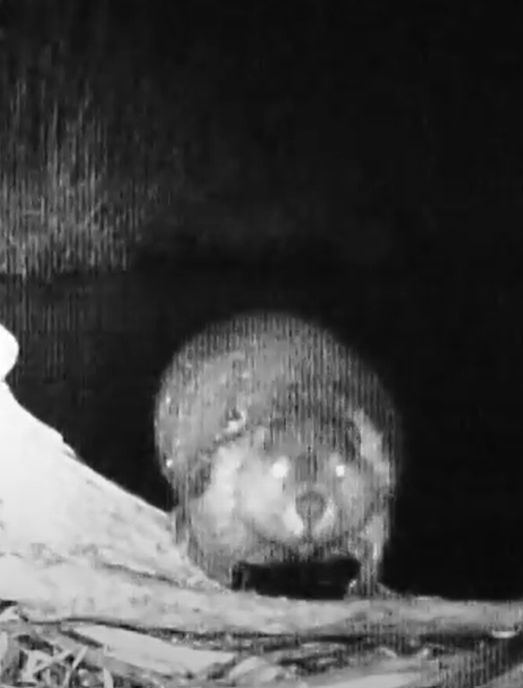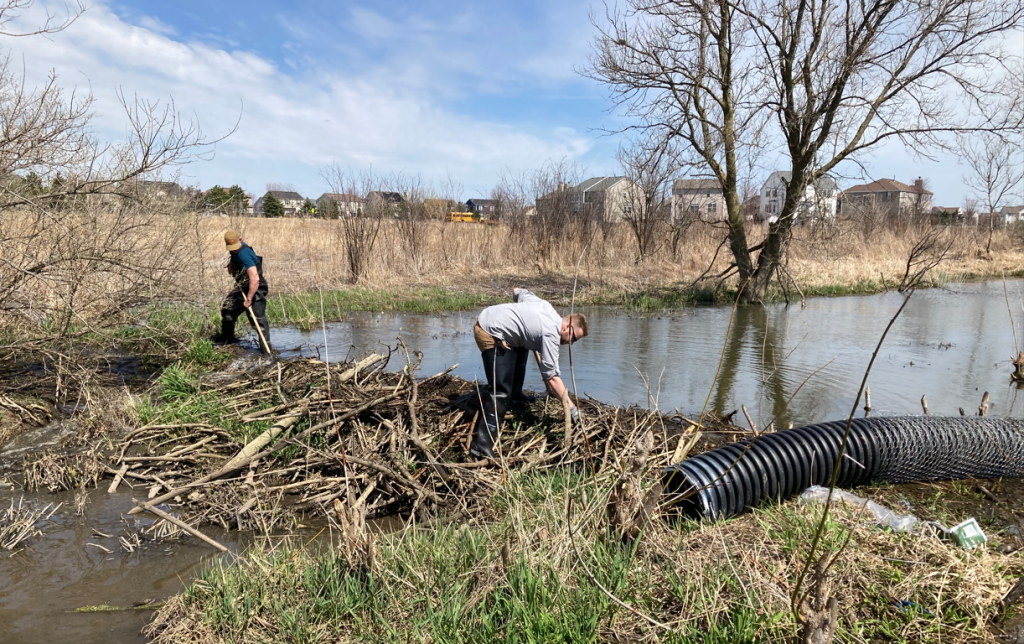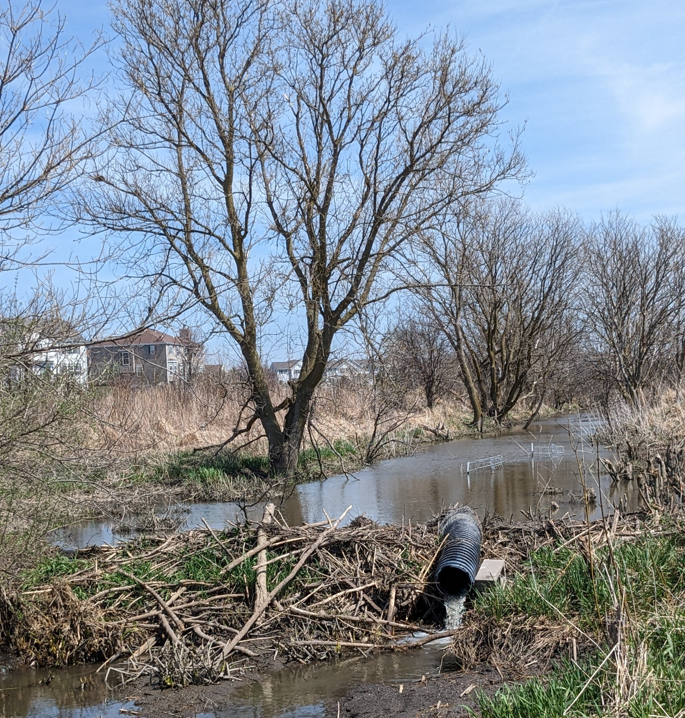
Living with Nature’s Engineers

TLC saw beaver activity on four preserved properties in 2023. Two of the TLC properties with beaver dams and lodges are just 25 acres, which indicates that beaver are pretty common in McHenry County.
The North American Beaver, Castor canadensis, shaped the landscape around us as significantly as the glaciers. Glaciers retreated about 12,000 years ago. But, just 400 years ago, there were at least 300 million beaver across the continent, and beaver dams were found every 100–300 feet in every stream, creek and small river in North America.
It has been said that beaver are second only to humans in their ability to modify the landscape to suit their needs. They are known as Nature’s Engineers, and one of the premier engineering schools in the world, MIT, chose the Beaveras its mascot. Four hundred years ago, many American streams were a series of flowing channels and marshes. It was a dynamic landscape as beaver channeled and dammed areas to gain access to trees and other tasty woody plants, major part of their diets.
Beaver are aquatic mammals whose preferred landscape has plenty of water that is at least three feet deep. The water protects them from predators, allowing the beaver to move quickly between food and their lodges without having to spend much–if any–time on dry land.
By the year 1900, beaver were nearly extinct due to their luxurious winter fur and the high demand for beaver pelts across Europe. Today, there are maybe 10 million

beaver in North America, and while sale of their pelts no longer make people rich, they are still hunted by trappers, primarily those hired to remove “nuisance”
beaver that are flooding farmland, blocking culverts or chewing on someone’s backyard trees.
Usually, TLC finds out about beaver dams when someone calls to complain about flooding on their property. For years, our standard response was to give the
complainer permission to remove the dam and the beaver, knowing that meant the beaver were killed. As complaints increased, we started looking for non-lethal ways to manage conflicts. After all, is 18th Century technology still the best we can do in the 21st Century?
One of the reasons that TLC was founded was to help ensure that every child growing up in McHenry County will live within walking distance of nature. McHenry County can be a place where people and nature are neighbors. That includes finding ways to live alongside Nature’s Engineers.
There are non-lethal ways to manage beaver. TLC is working with Midwest Beaver Management (MBM) to help people and beaver coexist at our Apple Creek Food Forest property and also at a conservation easement in the Remington Grove subdivision on Dutch Creek in Johnsburg.

MBM installed water-leveling devices in the beaver dams to manage upstream flooding. At Dutch Creek, we’ll wrap oak trees in chicken wire to prevent beaver from chewing them. In other words, we are adapting what we do to make room for beaver in our neighborhoods.
TLC is thrilled to welcome Leila Philip, author of Beaverland, as the speaker at our Annual Celebration on April 7, which happens to be International Beaver Day. We will also recognize Rachel Siegel, founder of Illinois Beaver Alliance, with our Conservation Champion award. We look forward to seeing many of you there!